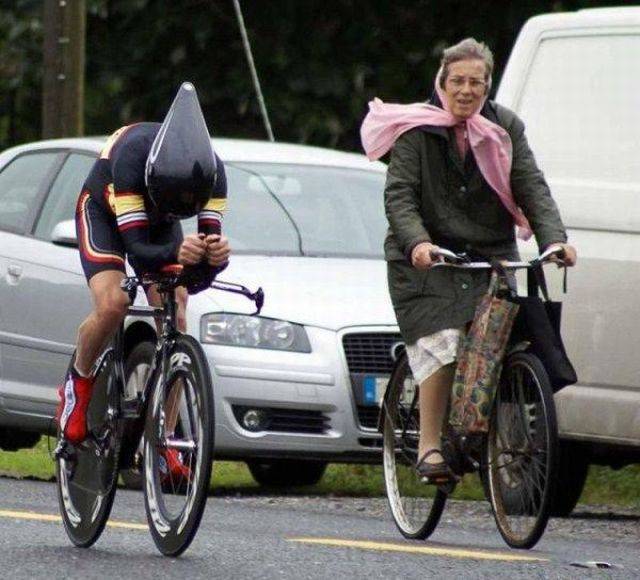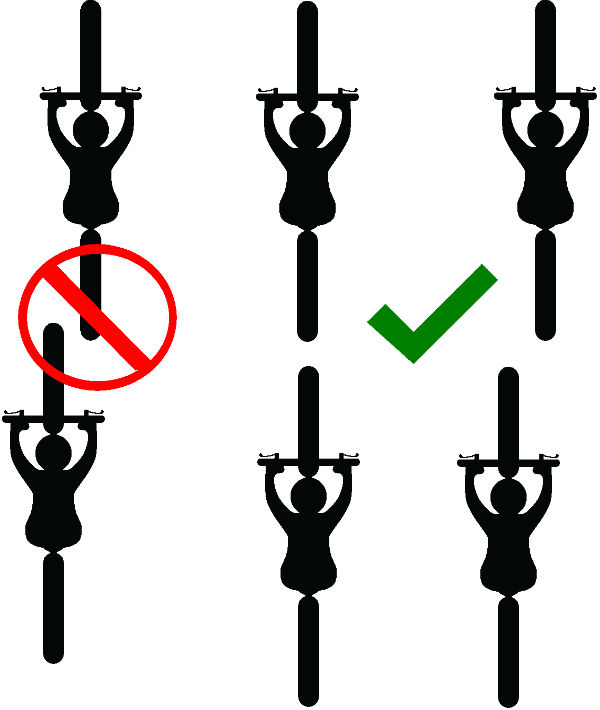“Peloton – A group of riders that clump together in a bicycle race on the open road”
 Group Rides can be a lot of fun and improve your riding skills if you’re hanging with the right crowd. But finding a group, and going on your first ride can be a scary and daunting experience.
Group Rides can be a lot of fun and improve your riding skills if you’re hanging with the right crowd. But finding a group, and going on your first ride can be a scary and daunting experience.
As a new rider the thought of joining a group didn’t even enter my head until I had owned my bike for 2 years, was able to ride at least 30kms without stopping and had ample experience riding on the road for part of the way to work. (At that stage I still wasn’t confident enough to ride the whole way)
But when it came time to take it to that next level and actually find a group I had so many questions running through my head:
- How do I really know when I’m ready?
- Do I have the right bike?
- Will I be able to keep up?
- What if I get dropped?
- Or worse still – what if I get lost?
- Will I have to take a turn at the front?
- What if I have a flat tyre?
- Are there any rules I need to know about?
- Does it cost money?
So how do you find, and ultimately choose the right group for you?
To do this you first need to understand the anatomy of the group ride.
Types of Groups
Group rides come in all shapes and sizes. Some examples are:
- Coffee rides: generally longer slower rides where the goal is to have fun, find new cafés and get to know your fellow riders over a good coffee.
- Training rides: usually associated with triathlon or cycle clubs where each ride has a particular training objective. Eg: Hills, speed, skills etc
- “40 @ 40” smash fests: where the average speed is high and the goal is to go hard or go home. In this example the group will be riding 40km at 40kph.
- Beginners rides: most clubs offer beginners rides where they will teach you the rules, control the pace and start you off in a safe environment until you’ve mastered the skills required to join a more experienced group.
All too often they’re distinguished by how fast the group will ride. However, you also need to consider the experience of the riders, the distance to be travelled and the terrain you will be riding. A 10km ride up a 10% gradient at 20kph will hurt more than an 80km ride on a flat road at 25kph.
Group Culture
Even more important than the speed, distance and terrain is the need to understand the culture of the group. Different groups have different rules, standards, norms, expectations and in some cases pecking orders. Some are welcoming and inclusive, some think they are (but aren’t really), some are competitive and challenging and some are closed and elitist.
Understanding this is the key to choosing the group that’s right for you. In many cases, to really understand the culture you need to actually go for a ride with them. But if you start by asking these questions up front it will go a long way to helping you understand the culture:
- Do they provide clear expectations of their members from a skills perspective or can anyone just turn up?
- What types of bikes can people use?
- How big are the groups and do they split them up if too many people turn up on the day?
- What happens if someone gets a flat?
- What happens if someone gets dropped?
- What are the expectations of the group leader?
- Do certain members have roles? (leader and “tail end Charlie”)
The answer to these questions will help you determine what their attitude is to the safety of its members and the support offered to new riders. We’ve all been dropped at one stage in our riding career. And let’s face it… it sucks. It’s a blow to your ego and it’s a blow to your confidence. It makes you feel like you’ve let the group down and it doesn’t really provide the motivation to get out there next week and do it again.
The hurt locker is never a good place to be abandoned, so you need to know what will happen when you’re knocking on its door.
Oh, and the advantage of breaking into smaller groups is to:
- Limit the impact to passing cars
- Make it easier for the group members to see what’s coming
- Group similar abilities together
- Make it easier for the group to hold together when taking off from lights and intersections etc.
- It’s easier to keep track of a smaller group. If one person gets a flat towards the back of a larger pack the front riders may never know.
Group Leaders
A pivotal factor in determining the right group for you should be the quality and attributes of the group leaders. In my experience a good group leader should have the following traits:
- a consistent rider (no bungee riding – able to hold an even pace throughout the ride)
- provides clear and early signalling makes sure the entire group is together and no one gets left behind
- points out hazards early
- provides help and tips for newer riders
- establishes the rules of the ride and keeps all to account
- maintains the reputation of the group by challenging poor behaviour
- clearly explains the route and what to expect from each ride
Finding a Group in your area
Group rides are organised by cycle clubs, triathlon clubs, retail shops, social clubs and work mates. Just go to the local bike shop and have a chat and you’ll be amazed how many there are to choose from.
Homework – things you need to know before joining a group
Before you start riding in a group there are some skills you need to practice and universal group rules you need to know about, for your safety and the safety of others around you. To get you started I have included some cool links at the bottom of this post, but here are some of the key things to know:
Skills:
- Keep your line and control your speed – when you ride within a group you need to be predictable and have the ability to control your speed. This includes the ability to take a drink and make hand signals while riding in a straight line.
- Know your cycling hand signals
- Climbing – keep your momentum when “standing up”

Rules:
- Be predictable – no sudden swerving or braking
- Announce hazards – including when you get a puncture
- Don’t half wheel
- Ride with your hands on the hoods or drops so you have quick access to your brakes
- Close the gaps
- Don’t look back – look ahead
And what you really need to know to ensure you don’t piss anyone off …..
- Ensure your bike is in good working order
- Bring water
- Pack some food for the longer rides
- Bring a spare tube, pump or gas and tyre levers
- Make sure you know how to change a tube
At some stage in your cycling / triathlete career you’ll be exposed to the “group ride”. It may become part of your training or it may just be an excellent excuse to share a coffee with some friends. But remember, it’s not all about the fastest riders, who owns the most expensive bikes or how many ironman events you’ve completed.
The group ride is about friendship, variety, learning, support, fun and above all safety. So don’t be afraid to ask heaps of questions and find the group that’s right for you. Being a part of your local peloton will not only improve your riding but will also be a lot of fun.
So get out there and give it go. And feel free to leave a comment and let me know what type of group ride you enjoy.
Keep Smiling Tri Monkeys
CLICK HERE TO SUBSCRIBERESOURCES
Signals
Cycling Tips.com: verbal and Non Vernal Communication
Art’s Cyclery: Rules of the Road – Hand Signals
Cycling Training – Signals when training for cycling
Group Riding Etiquette
Global Cycling Network – How to Ride in Group – Group Riding Etiquette
Global Cycling Network – How to Ride in A Group – An Introduction
How to Climb in a Group

But finding a group, and going on your first ride can be a scary and daunting experience.
Definitely. But so much fun once you’ve found the right group.
Very neat article.Much thanks again. Want more.